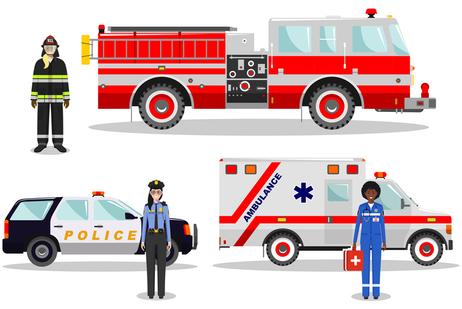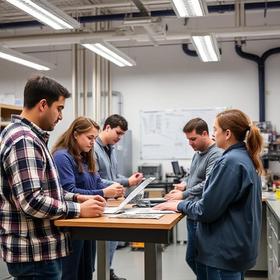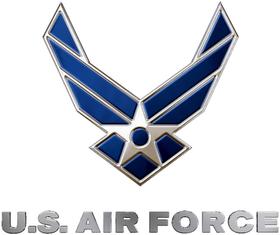First Responders and Emergency Services: Specialized Roles and Training
Disclaimer: I am writing this article against the backdrop of the catastrophic Los Angeles fires. The Pacific Palisades Fire and the Eaton Fire started on January 7, 2025. The scenes of destruction are appalling. If I seem emotional sometimes, it's because I ran with the Warren Volunteer Fire Department in the 80s when I lived in Litchfield County, Connecticut. I know firsthand how devoted these first responders, firefighters, emergency responders, and all the other personnel fighting the fires are to their calling. These folks work tirelessly in hazardous conditions. ~Rob Kennedy
The Premise
In an era marked by escalating environmental disasters and security threats, the field of emergency services (EMS) has never been more critical. Yet, the EMS field is facing a critical workforce shortage. The American Ambulance Association reports a 20-30% annual turnover rate for EMTs and paramedics, meaning agencies need to replace their entire staff approximately every four years. The Bureau of Labor Statistics projects a 7% growth rate for paramedic jobs from 2018 to 2028, with about 18,700 new jobs expected over the next decade.
As I will show you, there's a wide range of positions available in the field. Best of all, they suit dedicated men and women of all ages. For example, when I ran with the Warren VFD, I started by learning how to drive the ambulance. You might think that's an easy job. Nothing to it, right? Not so fast! The vehicle is a very heavy machine with a high center of gravity. In addition to keeping your eyes on the road with lights flashing, siren blaring, and two-way radio crackling, you're very aware of the emergency medical technicians caring for the patient in the room behind you. Everybody's safety is paramount.
After driving the ambulance for a few months, I was encouraged to take the State of Connecticut training required in order to become an EMT. The state required 120 hours of in-person classes, and my passing the state examination. That examination was written and practical. Now, you need to understand that I was not being paid for any of this. My role as an ambulance driver and as an EMT was strictly volunteer. What it did was give me a firsthand look at the dedication, skill, and compassion of first responders and firefighters. You see, I was at the bottom of the pole. Above me were folks who had been doing this for years. When we responded to a scene, it was a well-oiled routine that ensured everybody's safety from the moment we arrived on the scene. I have never forgotten that. A tornado in July 1989, a fatal motorcycle accident, a major barn fire - these incidents are still fresh in my memory as though they were yesterday.
This video offers a look at an ambulance driver and his special driving skills.
Now, let's delve into the expanding world of emergency services and explore the various specialized roles that have emerged to meet today's new challenges. We'll examine how community colleges have become pivotal in preparing the next generation of emergency responders, offering state-approved certifications and hands-on training for a wide array of positions. So, whether you're considering a career change or simply curious about the evolving landscape of public safety, here is my insider's look at the exciting and vital field of emergency services.
Here's a listing of jobs in the emergency services field. I've put an asterisk next to any position for which you can find training and preparation at your community college. I've also included links to external sites for each of the positions below so that you can read more about what each one entails.
*Firefighters
Trained in fire suppression, rescue operations, and emergency medical care.
- Firefighter
- Driver Engineer/Apparatus Operator
- Lieutenant
- Captain
- Battalion Chief
- Assistant Chief/Deputy Chief
- Chief
*Specialized Roles
Many fire departments also include specialized positions such as:
- Fire Inspector: Conducts building inspections for fire code compliance
- Fire Investigator:Determines causes of fires
- Hazardous Materials Technician: Specializes in handling dangerous substances
- Public Information Officer: Manages communication with the media and public
*Emergency Medical Tecnicians
Provides basic emergency medical care and transportation for critical patients.
- Emergency Medical Responder (EMR)
- Emergency Medical Technician (EMT)
- Paramedic: Offers advanced emergency medical care, including administering medications and performing medical procedures.
- Flight Paramedic
*Law Enforcement
Roles within SWAT (videos)
*Hazardous Materials (HAZMAT) Specialists
These positions specialize in handling and containing dangerous substances. The links take you to videos explaining the various positions.
Bomb squad personnel handle explosive devices.
*Specialized Rescue Teams
I have linked these positions to community colleges so you can see what the training entails.
*Incident Command and Management
*Interagency Cooperation and Joint Operations
The point of these positions is to overcome the silo mentality that has existed for decades in the public safety arena. For example, a police department discovers a potential fire hazard but doesn't alert the fire department about it. When several buildings blow up, there's tons of finger-pointing. Interagency cooperation can mitigate this unacceptable outcome.
This video looks at refresher training for EMS personnel.
Ongoing Training and Professional Development
The Importance of Certifications
The certifications available at community colleges provide opportunities for career growth and specialization within emergency services for men and women of all ages.
They allow professionals to:
- Develop expertise in specific areas such as hazardous materials handling, urban search and rescue, or emergency medical response
- Qualify for advanced positions and leadership roles
- Demonstrate commitment to professional development and continuous learning
Uniform Assessment Standards
Certified professionals have better job prospects and increased employability. Furthermore, many emergency service positions require specific certifications as a prerequisite. Certifications from recognized institutions like FEMA or the National Fire Academy are recognized by employers everywhere.
In conclusion, certifications in emergency services not only enhance an individual's skills and knowledge but also contribute to career advancement, improved job prospects, and overall professionalism in the field. They play a crucial role in ensuring that emergency responders are well-prepared to handle a wide range of critical situations effectively.
Conclusion
In this outline, I have covered a wide range of specialized positions within the first responder and emergency services fields, including firefighting, EMS, law enforcement, HAZMAT, bomb squad, and SWAT. I have also touched on the training requirements, roles, and responsibilities associated with them. The emergency services field needs dedicated, well-trained personnel. Will you be one of them?
Questions? Message me on Facebook, YouTube, or Instagram. @communitycollegelreview
#EmergencyServices #FirstResponders #CareersinPublicSafety #CommunityCollegeTraining #ClimateChangeImpact















